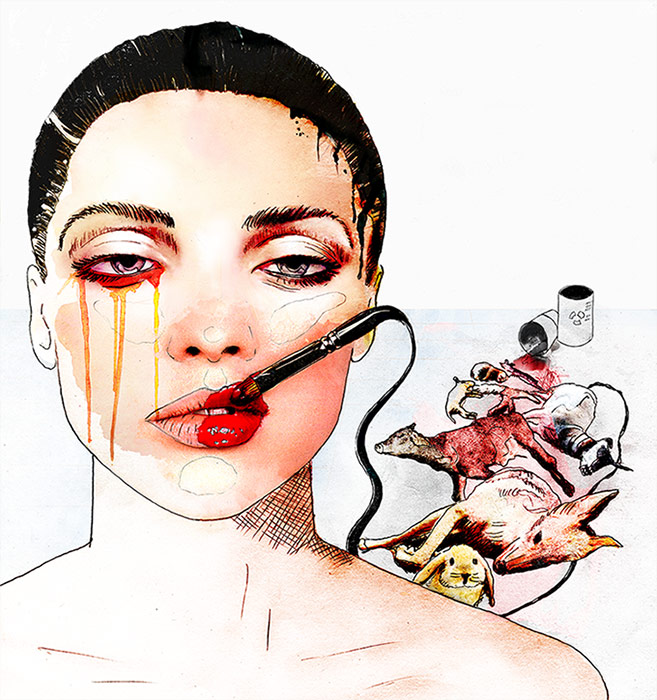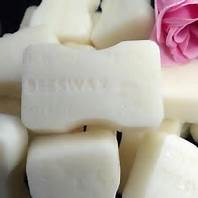SkinSchool: How to treat body breakouts
















SkinSchool: How to treat body breakouts
Whether you're susceptible to acne, or have been able to swerve spots for most of your life, none of us are immune to the side effects of sweat, including body breakouts. Indeed, regardless of facial blemishes, your chest, back and even bottom can experience flare-ups and one of the biggest triggers is your own perspiration. Sounds unpleasant, we know, but with the weather warming up it's natural to perspire more, though that alone isn't the culprit of body acne. With home working – and workouts – the norm for many of us now, rather than jumping in the shower and heading off to the office, many of us instead tuck into breakfast and emails before finding a slot to rinse off. In fact, a recent survey found that 73 per cent of people don’t shower straight after working out. Done regularly and your skin can suffer.
“Your back and chest, like your face, has sebaceous glands that secrete sebum which can combine with dead skin cells, bacteria, dirt and sweat to block the hair follicles and create inflamed pores, leading to acne,” explains Dr Tiina Meder, dermatologist and founder of Meder Beauty Science. So, the longer you postpone your shower, the more chance bacteria has to brew as you’re simply not getting rid of those sweaty emissions.
Keeping your gym kit on is another no-no and can exacerbate the problem. “Tight, moisture-wicking materials generally aren’t breathable and can trap oil and dead skin for hours and hours creating the perfect storm for a body breakout,” continues Meder. However, it’s not just the festering that can spur on spots, it’s the friction, too. “Our pilo-sebaceous unit (the base of a pore) doesn’t like to be agitated and it’s defence mechanism is to swell,” says Pamela Marshall, clinical aesthetician and owner of Mortar and Milk clinic. This inflammation from constant rubbing around the hair follicles is what causes lumps and bumps on your bottom, aka ‘buttne’ or folliculitis if you prefer the professional term. It doesn’t stop there. “If the folliculitis gets out of control and the infection becomes deeper it’s known as carbuncles, which is a cluster of boils that feel like painful knots of pus under the skin – a bit like an acne cyst,” reveals Meder. If that hasn’t got you sprinting for the shower, we don’t know what will.
For those that do turn on the taps within minutes of finishing their final rep, know that another red flag is wearing the same kit multiple times. The same survey cited earlier also showed that 31 per cent of people put on the same gym gear the next day and will often wait up to four sessions before they resign it to the laundry basket. In reality, even just a 20-minute HIIT session warrants a wash cycle as all that the bacteria and sweat you excreted will still be there when you pull it on the next time, leaving you more vulnerable to breakouts.
Other body acne causes
While sweat from exercise is a huge trigger, it isn’t the only one. Research shows that there is a link between stress and acne flare-ups, especially on your back, while the hormones that cause facial breakouts also play a part. “Too much androgen – the male sex hormone – is often the case in both male and females,” explains Marshall. “For women, whether we are about to start our menstrual cycle, pregnant or nursing, or have PCOS, we will experience shifts in our hormones. When oestrogen is dipping it means androgen is in abundance and can send messages to our sebaceous glands to produce more oil.” And once your pores are blocked with oil the bacteria can get to work on the skin surface causing inflammation and spots.
Other lifestyle aspects should also be examined. Just like workout gear can aggravate the issue, so too can dirty bedsheets, so wash them weekly to see if that makes a difference. Whey protein shakes are another culprit that Marshall looks for as they can spark androgen stimulation. How you wash yourself is something else to consider. “Another very common reason for body acne is due to hair conditioner as it’s formulated to adhere to the hair follicle so often for people with this type of acne, we just change the way they shower so the body gets washed after all the hair conditioner is rinsed out,” she says.
Talking of body hair, it’s important to clean in the direction of the hair grain according to consultant dermatologist, Charlie Mitchell – that means smoothing your shower products down your legs and arms and not up and down repeatedly as this can irritate the follicles by forcing them the wrong way. For hair-free areas, gentle circular motions with gentle pressure is best, he says. And don’t over-wash. “Regular cleansing is always useful but too much washing can have a detrimental effect by stripping away too much of the natural sebum that our skin uses as a defence against the outside world,” he says.
Are products a problem?
Products that block the pores can worsen the breakouts and spur on inflammation but often they’re not the sole cause. If you do want to be diligent with what you’re using it’s important to avoid ingredients that are potentially comedogenic (pore blocking). “This includes oils, silicone, fragrance, lanolin, petrochemicals (for example paraffin, wax, mineral oil or petrolatum) and sodium chloride. You wouldn’t think salt would be used in formulations but it’s sometimes used as a thickening agent, especially in body make-up,” explains Dr Charlene DeHaven, Clinical Director of iS Clinical.
“Product-wise, the repeat offenders are likely to be fragranced body lotions and oils, and mineral SPFs that don’t contain micronised formulations of zinc and titanium dioxide. Take care with body make-up, too, which is growing in popularity as we seek to contour limbs. Choose water-based formulas where possible and avoid ingredients like bismuth oxychloride (which gives powders their shimmery finish but has been linked to cystic acne) and mica, silica and talc which can be found in bronzers and can irritate already inflamed skin,” she continues. Something to consider if you like to use products on your décolletage but are prone to spots in that area too.
How to beat body acne
Often the same active ingredients that you use on your face to solve spots will work wonders on the rest of your body and more and more formulas are including actives in their line-up. As dermatologist, Dr Anjali Mahto explained in Bazaar’s #SkinSchool video (above), salicylic acid, AHAs like glycolic acid that help to exfoliate and remove dead skin cells, niacinamide, benzoyl peroxide and even tea tree are all good go-tos for treating spots.
Prebiotics and probiotics can also help maintain the pH of the skin which needs to be balanced so it can function properly (especially important if you exercise as sweat alters the pH levels). In the shower use something like Dermalogica’s Active Clay Cleanser every two to three days that can be applied to face and body. Containing prebiotics to feed the good bacteria and maintain that pH balance, clay to draw out congestion, broccoli extract to refine pores and tea tree to soothe, for a deeper purifying action, leave it on for a couple of minutes before rinsing off with warm water. Out of the shower, medical and cosmetic doctor Dr Ewoma Ukeleghe, who is Superdrug’s skincare ambassador, tells us to reach for niacinamide, which is a "great anti-acne ingredient, but also improves pigmentation" (which can results after inflammation), as well as salicylic acid, a beta hydroxy acid which penetrates follicles to break down oil build-up. Dr Ukeleghe recommends mixing Superdrug's Me+ Salicylic Acid Body Gel Cream and Me+ Niacinamide Body Gel together and applying it to trouble areas.
For hard to reach spots, you could opt for a mist like Cosrx’s AHA/PHA Clarifying Treatment Toner that makes targeting the middle of your back where your sports bra crosses easy, while in the shower try the Me+ Salicylic Acid & Ceramides Cleanser, which gently exfoliates whilst removing oils and impurities that could lead to clogged pores and blemishes.
"By using active ingredients you increase the skin's sensitivity to the sun," Dr Ukeleghe reminds us. "So it's really important that you counteract that by using sunscreen." Here, look for non-comedogenic formulas, and try the doctor's tip of using a mattifying formula designed for the face on the body "in those specific areas where you are getting acne". She recommends the Solait Mattifying Face Fluid SPF30.
Finally, you could invest in Marshall’s absolute swear-by bacne solver, Clinisept+ Aftercare. Acting like a disinfectant for skin, it protects against infection and helps treat conditions like acne. “It’s inexpensive and can change your skin for the better quite quickly - I add it in to combat any excess bacteria” she says.
As for a timeline on how long it will take to see results, it could be as little as two weeks although more inflamed spots may need to be subjected to a stricter routine before they disappear. “It takes 28 days for the skin cells to turnover fully, but the glands are more permanent and deeper structures,” explains Mitchell. “However as long as the irritations of blocked pores, excessive rubbing or staying moist for too long is removed, they should settle down.” Hopefully armed with actives and a new incentive to shower off post-sweat session your body acne should disappear as quickly as it arrived.
Articles-Latest
- Skin tags: Why they develop, and how to remove them
- So That’s Why Your Skin Gets Crepey As You Get Older
- Eye Infection from False Eyelashes
- Teeth stain removal and whitening solutions
- Benefits of collagen for skin
- Why vitamin E should be part of your skincare regime
- Can gray hair be reversed?
- Hair loss affects 1 in 10 women before the menopause – here’s how to treat it
- Conscious ageing and Black skin: What happens when Black does crack?
- Your skin color may affect how well a medication works for you — but the research is way behind
- The C word Cancer
- Astringents
- How does light therapy work? The science behind the popular skincare treatment
- The Most Offensive Fashion Police Criticisms of All Time
- Everything you need to know about lip filler migration, as told by the experts
- Pig semen and menstrual blood – how our ancestors perfected the art of seduction
- Everything you need to know about benzoyl peroxide
- We've bleached, relaxed, and damaged our hair to make ourselves look more white
- Will this be the year that facial filler is cancelled?
- Shock of the old: 10 painful and poisonous beauty treatments
Cosmetic ingredients
LOGIN
Who's On Line
We have 21 guests and no members online
Articles-Most Read
- Home
- Leucidal
- White Bees Wax
- Cosmetic Preservatives A-Z
- Caprylyl Glycol
- Cosmetics Unmasked - How Safe Are Colorants?
- Cosmetics Unmasked - Choosing Ingredients
- Cosmetics Unmasked - Colorants And Fragrances
- EcoSilk
- Toxic Beauty - Who's Looking At Cosmetics?
- Cosmetics Unmasked - Fragrances
- Microbes and Cosmetics
- Chemicals Lingering In The Environment
- Microbes and Safety Standards
- Yellow Bees Wax
- Potassium Sorbate
- Toxic Beauty - Hazardous To Your Health
- Synthetics In Cosmetics - The Industry Fights Back
- Fresh Goat's Milk Soap
- Active Ingredients
- What's Happening in the USA - Cosmetic Regulations - Toxic Beauty
- Cosmetics Unmasked - Listing Cosmetics
- Toxic Beauty - Cocktails and Low Doses
- Natural Waxes A-Z
- Natural Butters A-Z



